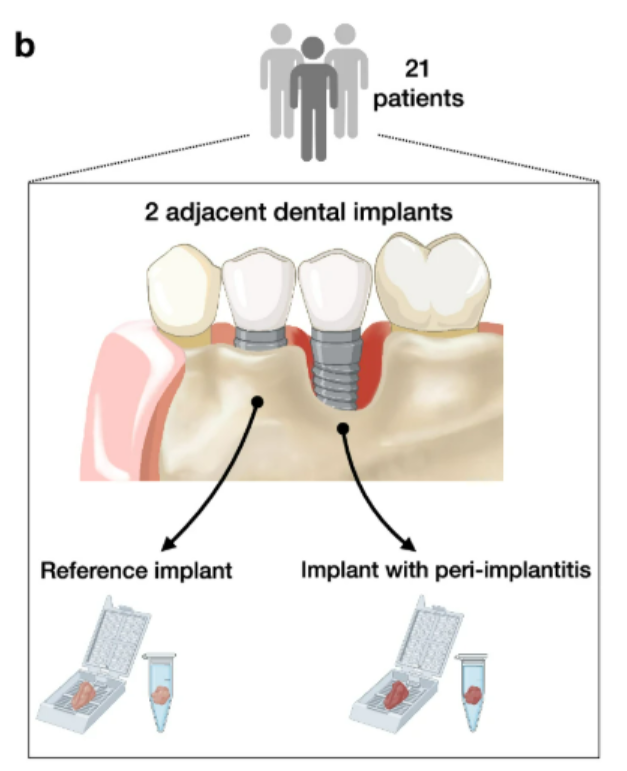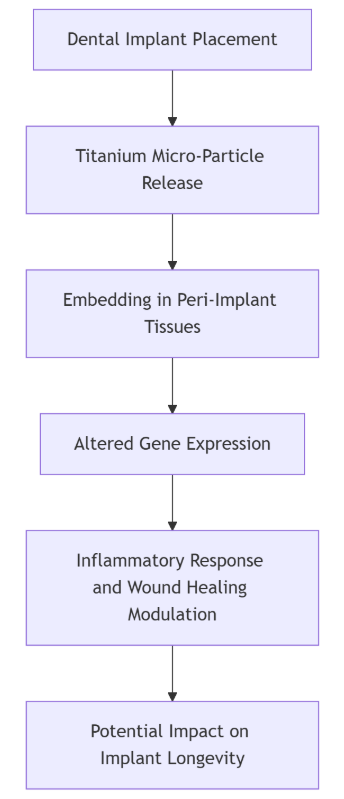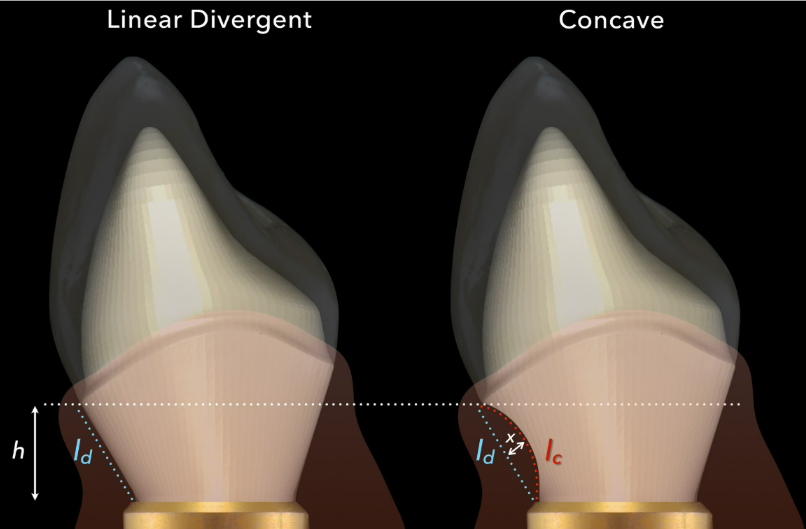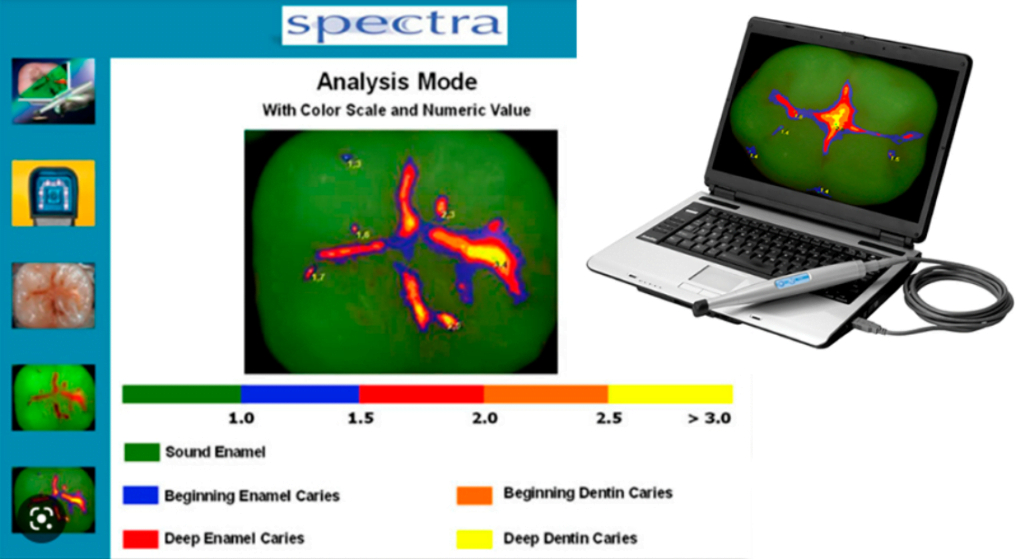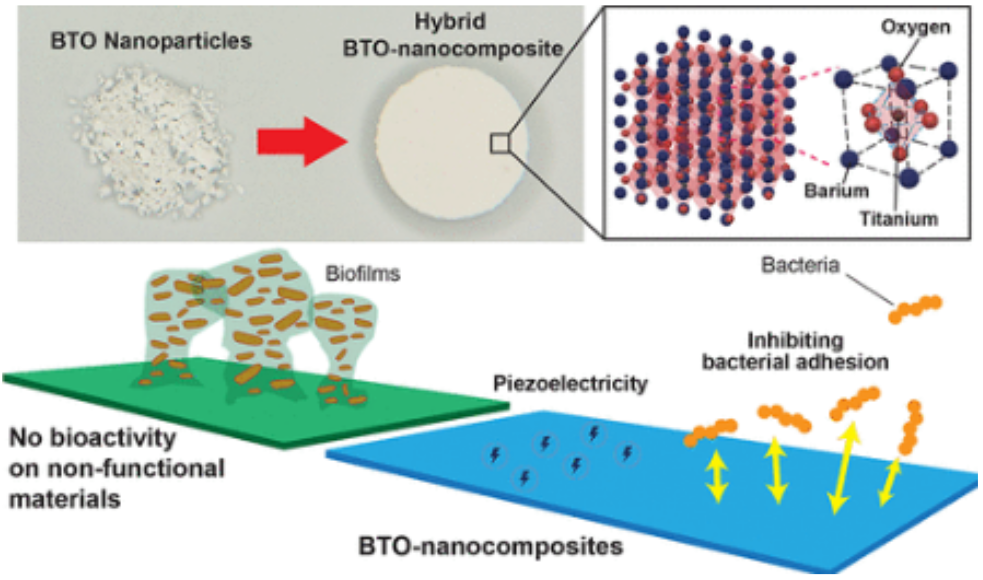Titanium Micro-Particles Around Dental Implants: Implications for Oral Health and Implant Longevity
A recent study from the University of Gothenburg sought to find a link between titanium microparticles in the surrounding tissues and inflammatory processes in the area of implants. The most severe of which is peri-implantitis. This study, published in Communication Medicine, shows that titanium particles are commonly found around dental implants, regardless of the presence of inflammation. The findings prompt a reassessment of our understanding of implant biocompatibility and its long-term effects on oral tissues.
Key Findings: Titanium Particles and Gene Expression Alterations
The research team analyzed tissue samples from 21 patients with multiple adjacent dental implants. Samples were collected from both healthy implants and those affected by peri-implantitis, an inflammatory condition that can lead to implant failure.
- Ubiquitous Presence: Titanium micro-particles were detected in all examined implants, irrespective of inflammatory status.
- Gene Expression Changes: Tissues with higher concentrations of titanium particles exhibited altered expression in 14 genes, particularly those associated with inflammation and wound healing.
- Implant Surface Influence: Variations in micro-particle densities were observed between different implant systems, suggesting that implant surface structure may influence particle deposition.
These findings highlight the need for further investigation into the biological impact of titanium particles and their role in peri-implant tissue health.
Mechanisms & Biological Pathways: Understanding Titanium Particle Dynamics
Origin of Titanium Micro-Particles
Titanium particles are believed to be released during the surgical installation of dental implants, particularly when the screw-shaped implant is inserted into the prepared alveolar bone. The mechanical forces involved in this process can generate micro-particles that become embedded in the surrounding soft tissues.
Biological Response to Titanium Particles
Once present in the tissue, titanium particles may interact with the local cellular environment, potentially influencing gene expression related to inflammation and wound healing. The exact mechanisms remain unclear, but the altered gene expression observed in the study suggests a biological response to the presence of these particles.
Implications for Implant Surface Design
The study’s observation of varying particle densities among different implant systems points to the significance of implant surface characteristics. Surface roughness and texture may affect the extent of particle release during implantation, indicating that implant design could play a role in minimizing micro-particle generation.
Implications for Dental Professionals: Navigating Clinical Practice
The discovery of titanium micro-particles around dental implants carries several implications for dental practitioners:
- Enhanced Monitoring: Clinicians should be aware of the potential presence of titanium particles and consider monitoring peri-implant tissues for signs of inflammation or other adverse reactions.
- Implant Selection: Understanding the influence of implant surface design on particle release may guide the selection of implant systems that minimize micro-particle generation.
- Patient Education: Informing patients about the potential for titanium particle presence and its implications can foster informed decision-making and adherence to post-operative care protocols.
- Research Participation: Dental professionals can contribute to ongoing research efforts by reporting clinical observations and participating in studies aimed at elucidating the long-term effects of titanium particles.
Study Overview: Methodology and Analytical Approach
The study employed a robust methodology to investigate the presence and impact of titanium micro-particles:
- Sample Collection: Tissue samples were obtained from 21 patients with multiple adjacent dental implants, encompassing both healthy and peri-implantitis-affected sites.
- Particle Detection: Advanced analytical techniques, including micro-Particle Induced X-ray Emission (µ-PIXE), were utilized to detect and map the distribution of titanium particles within the tissue samples.
- Gene Expression Analysis: The researchers conducted gene expression profiling to identify alterations associated with varying concentrations of titanium particles.
- Comparative Assessment: Each patient served as their own control, allowing for direct comparison between healthy and diseased implant sites within the same individual.
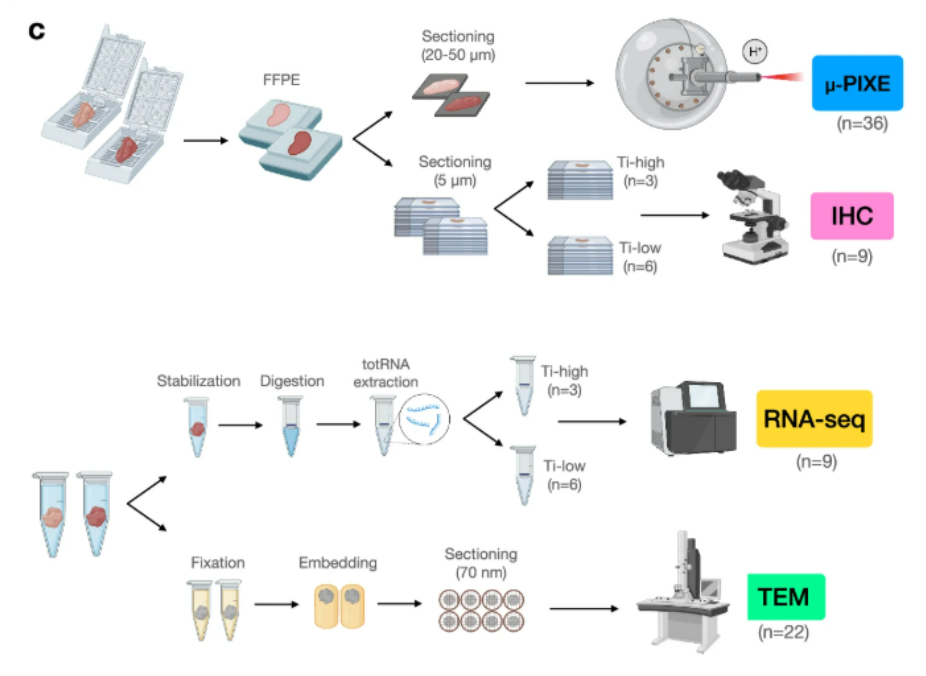
a Clinical pictures from one representative patient. Reference implant (left) and implant with peri-implantitis (right) depicted before, during, and after the surgical intervention. b Schematic illustration of soft tissue biopsy retrieval. Twenty-one patients were recruited. One soft tissue biopsy, about 3–5 mm wide, was collected from one dental implant site with peri-implantitis and from one adjacent reference implant site. An additional tissue portion, about 1 mm wide, was collected from the same peri-implant sites in each patient. c Schematic illustration of soft tissue biopsy processing and applied methods for analysis. – Formalin-fixed paraffin-embedded samples were prepared for the localization, quantification, and characterization of titanium micro-particles. Three pairs of specimens (n = 6) were excluded from the analysis due to complications in sample preparation. Thus, a total of 36 sections, 20–50 μm thick, were analyzed with Micro Proton-Induced X-ray Emission (μ-PIXE). Three additional sections obtained from patients affected by periodontitis (i.e., with no dental implants) were used as negative controls. – Peri-implantitis specimens obtained from 10 patients were prepared for bulk RNA-sequencing analysis (RNA-seq). Specimens were divided in two groups depending on the volumetric density of titanium particles found in the corresponding FFPE samples. Differential gene expression analysis was performed comparing samples presenting with volumetric densities higher than the mean (Ti-high) to those presenting volumetric densities lower than the mean (Ti-low). One sample was excluded from the analysis due to the exclusion of the corresponding FFPE specimen. Thus, a total of 9 samples were analyzed. – Sections from 9 peri-implantitis FFPE (matched to samples analyzed with RNA-seq) were prepared for immunohistochemistry (IHC). – Samples from peri-implantitis and reference implant sites obtained from 11 patients were analyzed with transmission electron microscopy (TEM). / Communication Medicine/ Carlotta Dionodi /78 – March 2025
This comprehensive approach provided valuable insights into the prevalence of titanium particles and their potential biological effects.
Data Visualization: Titanium Particle Impact on Peri-Implant Tissues
Conclusion: Rethinking Implant Biocompatibility
The presence of titanium micro-particles around dental implants, as revealed by this study, challenges the long-held perception of titanium’s inertness in the oral environment. While the clinical significance of these particles remains to be fully understood, their association with altered gene expression underscores the need for continued research and vigilance in implant dentistry.
Dental professionals must stay informed about emerging findings and consider the potential implications of titanium particles on peri-implant tissue health. By integrating this knowledge into clinical practice, practitioners can enhance patient outcomes and contribute to the evolving landscape of implantology.
Frequently Asked Questions (FAQs)
Q1: Are titanium particles harmful to patients with dental implants?
A1: The study found titanium particles in all examined implants, but their direct impact on health is not yet fully understood. While no immediate harm has been established, their association with altered gene expression warrants further investigation.
Q2: How can clinicians detect the presence of titanium particles around implants?
A2: Currently, detecting titanium particles requires specialized analytical techniques not commonly available in clinical settings. However, awareness of their potential presence can inform monitoring strategies for peri-implant tissues.
Q3: Do all dental implants release titanium particles?
A3: The study observed titanium particles across various implant systems, suggesting that particle release may be a common occurrence. However, the extent of release may vary depending on implant design and surgical technique.
Q4: Can implant surface design influence titanium particle release?
A4: Yes, the study indicated that implant surface characteristics might affect the density of titanium particles in surrounding tissues. Further research is needed to determine optimal surface designs that minimize particle release.
Q5: Should patients be concerned about titanium particles affecting their implants?
A5: While the presence of titanium particles is noteworthy, there is currently no evidence suggesting immediate health risks. Patients should maintain regular dental check-ups and consult with their dental professionals regarding any concerns.
Sources
- ScienceDaily – Titanium particles are common around dental implants – April 9, 2025
- Communication Medicine – Titanium micro-particles are commonly found in soft tissues surrounding dental implants – March 18, 2025


